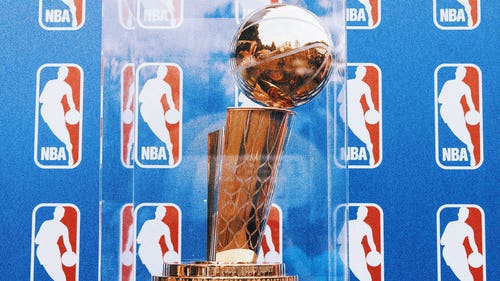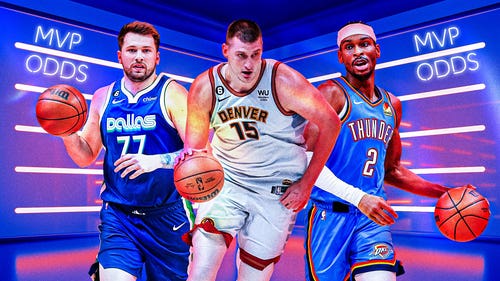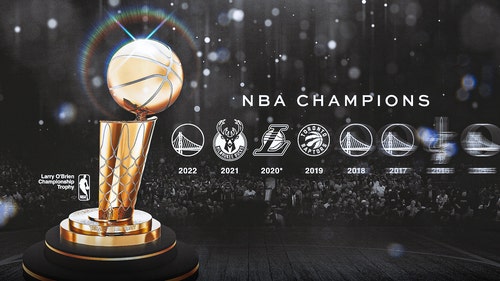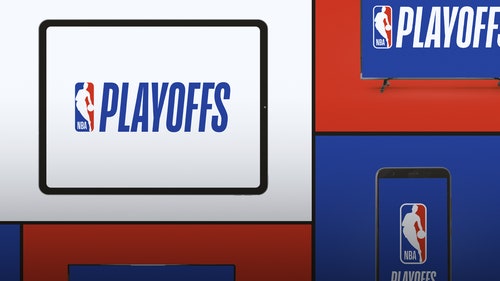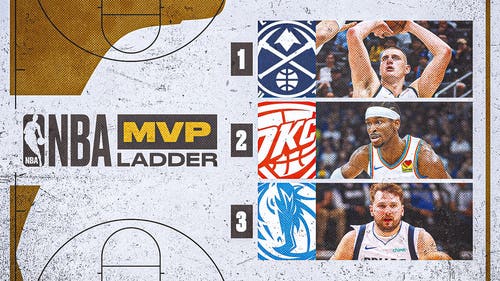
Seven Players Hoping To Turn The NBA's Stretch Run Into Paydays
The last month of the NBA regular season is intriguing on two fronts. Most of the headlines will focus on teams jockeying for playoff position and the battle for the final seed in both conferences, but the home stretch isn’t just about who will hoist the Larry O’Brien Trophy in June. The next few weeks will also provide a primer for the summer, with soon-to-be free agents on display for all 30 teams to see.
The summer of 2016 seemed to mark the peak of spending for NBA teams. A massive revenue increase for the league resulted in a $24 million cap spike, bringing the league’s salary cap from $70 million to more than $94 million. And with all that extra money, players cashed in, raking in deals that were once unheard of.
There were max deals given to stars like Mike Conley (five years, $153 million) and DeMar DeRozan (five years $139 million), but even more astounding were the contracts shelled out for players previously mired in the league’s middle class. Evan Turner snagged $70 million from Portland despite shooting 24% from three-point range in 2015-16, and Timofey Mozgov earned $16 million per year from the Lakers after Los Angeles struck out with the off-season's most-prized free agents.
This summer will see another increase in the cap, jumping to $102 million. The luxury-tax line will settle around $122 million. And with a number of teams projected to have significant cap space once again, the final month of the regular season provides a chance for players around the league to stand out in the eyes of league executives.
Here are seven players poised to earn an increased payday if they shine through the rest of the regular season. (All stats and records through Mar. 14)

Derrick Rose, New York Knicks
2016–17 stats: 17.8 ppg, 4.4 apg, 16.4 PER
Contract prototype: Evan Fournier: 5 years, $85 million
It’s evident that Rose won’t ever return to his MVP form, but that doesn’t mean he won’t be able to earn big dollars this summer. Rose has played in more than 50 games for three straight seasons, averaging 17.3 points per game in that span. He’s shown flashes of his former self, and is still a consistent threat to attack the rim.
Rose clearly believes he’s worth a Conley-level deal come July. It was reported in January that Rose will be seeking a five-year, $150 million deal this summer, which would encompass nearly all of New York’s cap space should they choose to re-sign him.
As of now it seems Rose is over-inflating his value. He doesn’t shoot well from behind the arc—just 22%—and he doesn’t get to the foul line. He’s simply not efficient enough of a scorer at this point in his career to rake in that kind of money.
There are enough teams around the league with holes at point guard who will justify signing Rose to a big-money deal. He can still take over games at times, but $150 million is a lot to commit.
Otto Porter, Washington Wizards
2016–17 stats: 14.1 ppg, 45.3 3P%, 17.6 PER
Contract prototype: Bradley Beal: 5 years, $128 million
If Rose’s career looks to be in decline, the opposite is true for Otto Porter. The Georgetown product struggled mightily early in his career, labeled a bust by many after being selected with the No. 3 overall pick in the 2013 NBA draft. Now, he’s scoring over 14 points per game and leading the NBA in three-point shooting at 45.3%.
Porter’s play has been one of the key parts of Washington’s ascension to second place in the Eastern Conference. The Wizards now have a quality third option alongside John Wall and Bradley Beal who can spread the floor for Wall’s drives to the rim. Washington has won seven of its last nine contests, averaging over 116 points per game.
Porter will be a restricted free agent in the summer, allowing Washington to match any offer. Porter is in position to receive several lucrative offers as a 23-year-old with significant upside. It’s a risky proposition, but Washington may be forced to match any mammoth offer for Porter this summer.

Danilo Gallinari, Denver Nuggets
2016–17 stats: 17.7 ppg, 39.1 3P%, 17.1 PER
Contract prototype: Kent Bazemore: 4 years, $70 million
It’s hard to believe that 2016–17 is Gallinari’s sixth year with the Nuggets after being shipped from New York in 2011. The former No. 6 overall pick is now the leading scorer for Denver, shooting a career-best 44.6% from the field.
The Nuggets currently hold the No. 8 seed in the West with 15 games to go. And if Denver fends off challengers to make the playoffs, Gallinari's stock will likely rise even further leading into free agency. Don’t expect Denver to get in a bidding war for Gallo’s services, though. The Nuggets have numerous starting-caliber wings, and could choose to prioritize signing a point guard in the off–season.

With Wilson Chandler, Jamal Murray and Gary Harris also fighting for playing time, Gallinari might find himself outside of the team’s summer plans. But he shouldn’t fret. Gallinari is too good of a scorer not to reel in a large contract in the off–season.
P.J. Tucker, Toronto Raptors
2016-17 stats: 6.6 ppg, 5.8 rpg, 10.4 PER
Contract Prototype: Courtney Lee: 4 years, $50 million
Tucker has become one of the league’s most reliable defenders despite playing five seasons overseas following his rookie season. He’s proven capable of guarding some of the best wings in the league and is a quality rebounder. Toronto’s trade for Tucker prior to the deadline was lauded by many throughout the league, who saw him as a strong defender who could slow down LeBron James in the playoffs.
Tucker would be an asset to a slew of teams throughout the league, but he has his limitations. He’s only shot above 35% from three once in his career, and averages just 6.6 points per game in 2016-17. There will be interest in Tucker once the season is over, but his contract will be a little more measured.

Kentavious Caldwell-Pope, Detroit Pistons
2016-17 stats: 14.2 ppg, 37.3 3P%, 13.7 PER
Contract Prototype: Harrison Barnes: 4 years, $94 million
Things looked bad in the Motor City in January and early February. A swirl of benchings and trade rumors surrounded the Pistons, who often looked sluggish and disinterested. But the Pistons have rallied since, winning seven of their last 10 games to hold the No. 7 seed in the Eastern Conference.
Caldwell–Pope has been integral in the turning around Detroit’s fortunes. He’s become a dynamic backcourt partner with Reggie Jackson, capable of attacking the rim and hitting jumpers off screens. And he’s just 24 years old.
KCP is far from polished, but two years of continued improvement will have teams coming his way in the summer. If Detroit can hold onto its playoff spot over the last 15-plus games, Caldwell-Pope will be a big reason why. Then it’s only a matter of whether the Pistons decide to re-sign him.
Jrue Holiday, New Orleans Pelicans
2016-17 stats: 15.9 ppg, 7.4 apg, 17.2 PER
Contract Prototype: Nicolas Batum: 5-years, $120 million
The third option for New Orleans behind Anthony Davis and the recently-acquired DeMarcus Cousins, Holiday holds a rare amount of leverage over the Pelicans. Their backcourt is woefully depleted, with few capable options aside from the veteran.
Guards Tim Frazier and E’Twaun Moore simply aren’t talented enough to avoid hemorrhaging points when Holiday isn’t running the show, and building the backcourt though the draft isn’t an option for the Pelicans, either. They sent 2016 first–round pick Buddy Hield to Sacramento in the Cousins trade as well as their 2017 first–round pick (top–three protected).

Davis and Cousins make for an extremely talented twosome, with each player able to take over the game at any point. But the partnership will prove to be a disappointment without a legitimate point guard feeding them the ball. If New Orleans is serious about making their twin-towers experiment work, they’ll need to sign Holiday to a major deal.
Patty Mills, San Antonio Spurs
2016-17 stats: 9.8 ppg, 42.2 3p%, 15.8 PER
Contract Prototype: Ian Mahinmi: 4 years, $64 million
Mills has seen an increase in playing time over the past two years in San Antonio, essentially splitting point guard duties with starter Tony Parker. Still only 28 years old, Mills is now a cog in the Spurs' machine, averaging just under 10 points per game as the team’s secondary floor general.
With Parker turning 35 this year, the Spurs would be wise o re-sign Mills. San Antonio sports a stunning 114.8 points per 100 possessions with Mills on the floor, a mark that ranks just under a point behind Golden State for the league’s top spot. He’s able to spread the floor and control the pace of the game, an ideal fit for Gregg Popovich’s style.
That said, Mills won't see a shortage of suitors this summer. Denver, Philadelphia and Dallas are just three teams with significant cap space, and all have holes at point guard. But Mills may choose to stay in the comfortable confines of San Antonio, and continue to chase championships with Kawhi Leonard and company. If he does, he'll take less money, but likely enjoy more wins.






































































































































